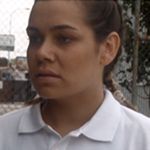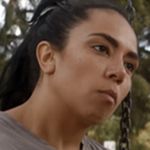Suite 2 this is us: Trust each other Topic: HOW CAN I PLAN AND ADVOCATE - FOR HEALTH, SAFETY, WELLBEING AND PARTICIPATION IN THE RIGHT LIFESTYLE ...
←
→
Page content transcription
If your browser does not render page correctly, please read the page content below
Young Deadly Free: How to have healthy relationships—Teacher Resource 2020 Suite 2 this is us: Trust each other Topic: HOW CAN I PLAN AND ADVOCATE FOR HEALTH, SAFETY, WELLBEING AND PARTICIPATION IN THE RIGHT LIFESTYLE BEHAVIOURS FOR ME AND MY MOB? lesson 1 Character analysis Target age group: Lower, middle and upper secondary (Year 7–10) Lesson duration: 45 minutes Australian curriculum: This lesson plan supports a number of capabilities in the Australian Curriculum, including Information and Communication Technology, Ethical Behaviour, Personal and Social Competence and Intercultural Understanding. Before commencing lessons Before running any of these lessons please do the following: 1 Pre watch all three videos referred to in this package. https://www.youtube.com/playlist?list=PLu8z- jO5SOE8oNc6VyYkjkQqI3P0qD0u3 2 Ensure you read about and set up a group agreement with your class to maintain safety of students. 3 Ensure you read about and set up the anonymous question box . 4 Ensure you have completed and are up to date with your RAN-EC child protection training (SA only). 5 Read your schools procedure for dealing with disclosures of child sexual abuse. Other training and support Sexual health training: SHINE SA provide support for schools and training on delivering RSE. Find out more here https://www.shinesa.org.au/support-for-schools/ A word about partnerships: While it is recognised that schools play an important role in the delivery of RSE, given the personal and cultural aspects of sexual health, consider partnering with your local Aboriginal community controlled health services (ACCHS) in the delivery of your program. Many ACCHSs have staff who are trained in sexual health and experienced in delivering community education. This partnership may be especially important if your school has limited Aboriginal staff. Alternatively, there may be local sexual health teams in your area who employ Aboriginal staff or can provide specialist sexual health support.
Young Deadly Free: How to have healthy relationships—Teacher Resource 2020
LESSON 1
Character analysis
Time required: Purpose
45 minutes
• Define what a Healthy Relationship is.
PREPARATION
• Understand the services and support needed to maintain a Healthy Intimate
• Video: This Is Us: Trust Relationship.
Each Other https://youtu.
• Critically analyse the need to be informed and inform others of what is
be/DWb5dehQqds
available to help them have a Healthy Relationship.
• Read about yarning circles
Learning goals
https://www.qcaa.qld.edu.
au/about/k-12-policies/ In this lesson students will:
aboriginal-torres-strait- • reflect on whether or not the behaviours in the This Is Us: Trust Each Other are
islander-perspectives/ desirable in a friend or someone you trust.
resources/yarning-circles
Procedure
• Print for each student
Handout 2.1 Characters, 1 Hand out the Handout 2.1 Characters, Roles, Behaviours Episode 2 and
Roles, Behaviours Episode 2 Handout 2.2 The Web of relationships in This Is Us.
• Print for each student 2 Explain that they are to begin to fill in Handout 2.1 Characters, Roles,
Handout 2.2 The Web of Behaviours Episode 2 as they watch the video.
relationships in This Is Us 3 Explain that the whole class will work through Handout 2.1 Characters, Roles,
• What is Help-seeking? fact Behaviours Episode 2 together when the video is finished so it’s okay if they
sheet https://www.lifeline. don’t get it all filled in.
org.au/static/uploads/files/ 4 Watch the video This Is Us: Trust Each Other https://youtu.be/DWb5dehQqds.
what-is-help-seeking- Conduct a brief class discussion about the different types of relationships
wfqyhtavxnmg.pdf they saw in the video: boyfriend, girlfriend, health worker, friends, best
friend.
TAKE HOME MESSAGE
5 Write their answers on the board.
By being aware of your 6 Discuss the roles and behaviours that each character took on.
friends’ behaviours you can
7 Discuss the concept of help-seeking.
understand them and make
Teacher note: The following factsheet on help-seeking from Lifeline may
some choices about ways to
support them. Sometimes
assist What is Help-seeking? https://www.lifeline.org.au/static/uploads/files/
supporting yourself and your what-is-help-seeking-wfqyhtavxnmg.pdf
friends means asking for help. 8 Ask students to identify who was able to seek help, who didn’t seek help but
It is important to make sure should have, and who supported their friends in seeking help.
you inform yourself about the
9 Explain that while being a teenager is about finding independence and
kinds of help available around
developing their own identity, it’s still very important that they are able to
you.
identify people and places that they can seek help from. Everyone needs
help sometimes.
2 This Is Us | Suite 2 Lesson 1Young Deadly Free: How to have healthy relationships—Teacher Resource 2020
Handout 2.1 Characters, Roles and Behaviours episode 2
WHAT ROLE DID THIS HOW COULD
THIS CHARACTER
CHARACTER PLAY?
HAVE HANDLED
RELATIONSHIP TITLE
CHARACTER WHAT TYPES OF THE SITUATION
TO OTHERS DIFFERENTLY TO
BEHAVIOURS DID YOU
GET THE HELP THEY
SEE? NEEDED?
Mira
Christie
Jen
JB
Clarry
Henry
3 This Is Us | Suite 2 Lesson 1Young Deadly Free: How to have healthy relationships—Teacher Resource 2020 Handout 2.2 The web of relationships in This Is Us 4 This Is Us | Suite 2 Lesson 1
You can also read
























































